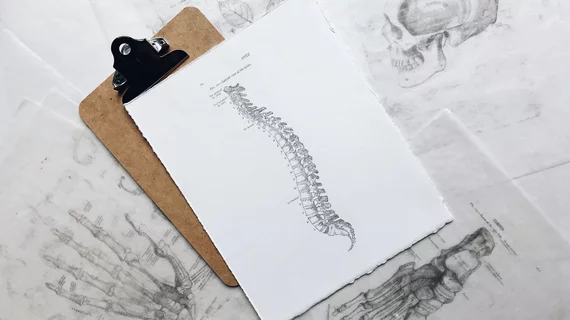Additional spinal imaging prior to total hip replacement proves cost-effective long term
Researchers believe preoperative spinal imaging should become part of standard protocol for patients undergoing total hip arthroplasty, according to a new study published in the Journal of Arthroplasty.
Dislocation, instability, and surgical revisions are all common risks THA patients have to weigh before deciding to undergo major joint replacement. Currently, most preoperative protocols involve imaging the hip and pelvis only.
But now, experts suggest incorporating seated and standing lateral lumbar spine images preoperatively to help identify patients with stiff/hypermobile spines (SHS). Although imaging would come at an added front-end expense, research suggests it could save money for both patients and surgeons long term.
“More functional analysis of the pelvis and lumbar spine has been endorsed in order to potentially decrease the dislocation incidence in at-risk patients,” Lucas E. Nikkel, MD, at Penn State Bone and Joint Institute’s College of Medicine at The Pennsylvania State University, and co-authors wrote.
For the study, patients with and without SHS, and who did and did not undergo preoperative spinal imaging (PSI) were compared.
The discounted lifetime cost of PSI was $12,515, with quality-adjusted life years (QALY) of 16.91 versus 16.77 for patients not screened. Patients with PSI reached the cost-effectiveness threshold at five years and preoperative imaging was considered less costly and more effective 11 years after surgery.
The additional imaging comes at a minimal added expense for patients, but in the long run it saves the physical and financial pain of dislocations and revisions, experts suggest.
“Routine acquisition of seated and standing lateral spine radiographs, which can identify risk factors for abnormal spinopelvic mobility, can be a cost-effective strategy to identify patients at elevated risk for postoperative instability and allow for targeted interventions to reduce instability risk,” Nikkel and co-authors explained.
You can read the full study in the Journal of Arthroplasty.

